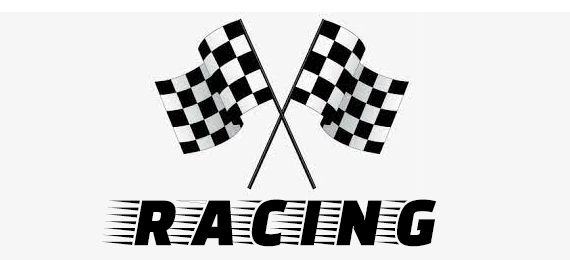
Do you know the meaning of the motor racing flags? Different colored flags have been used in motor racing to communicate with drivers about the various situations on the track including the penalty, start, and end of the race.
Traditionally, racing flags are introduced in auto racing to indicate various track conditions. They are shown in various places around the circuit and some of the important flags used to communicate significant messages to drivers.
All types of motorsports began to use either flags or signal lights to indicate drivers regarding hazards.
What Does the Blue Flag Indicate?
- A. A faster car is coming
- B. Car Accident
- C. Slow Down
- D. None of the Above
Meanings of Racing Flags
Checkered Flag
The checkered flag is usually displayed to inform the race is officially finished and the winner crossed the line. It is displayed to indicate the winner and other cars that cross the line behind the winner.
Yellow Flag
The yellow flag is also known as the caution flag which is shown to slow down because of the hazard on the track such as a car stopped in between the track, an accident, collision or rain.
The situation of showing yellow flag may vary:
A single wave indicates a hazard on the surface.
If two yellow flags are waved that delivers the information of completely or partially blocking the surface due to an accident.
The moment yellow flags waved, drivers are forbidden to continue or overtake until everything is cleared by displaying a green flag.
Red Flag
The red flag is only shown when conditions are too dangerous to continue the race. It depends on the circumstance, in some situations cars are required to move to pit road as soon as possible. In critical situations, the cars must stop immediately.
Green Flag
The solid green flag is displayed by a starter to indicate the race can begin. This flag is also displayed to resume the race again which might have stopped for any emergency reason.
Blue Flag
The blue flag is waved to inform a driver that a faster car will overtake him and he must leave.
Yellow and Red Striped Flag
Yellow and red striped flags are often displayed to inform the slippery track surface due to oil or water.
Black with Orange Circle Flag
A black flag known as a mechanical black flag contains an orange disc in its middle which informs that a car is being summoned to the pits because of severe mechanical issues or loose bodywork that can cause risk to other drivers. In some of the road races, it is displayed to summon vehicles to the pits to indicate the driver’s violation of “maximum sound levels.” It is also referred to as the meatball flag.
Half Black, Half White Flag
This flag is divided diagonally with black and white colors to show the drivers a warning for unsporting behavior. It is displayed if a car intentionally drives to hit another vehicle. The black and white flag is also shown as a warning to drivers who exceed their limits.
Black Flag
A black flag is waved to call a driver to the pits. It is mostly related to a penalty imposed on the driver who didn’t follow the rules. The flag is also used to indicate loose hood, mechanical failure, and damage.
White Flag
The white flag is displayed on the last corner to inform drivers that other drivers are doing practice. Drivers are allowed to do one practice in the free practice session.